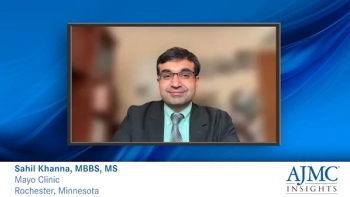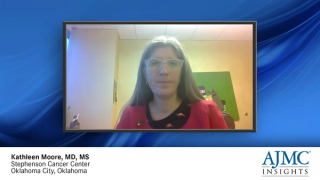
Clinical
Latest News
Latest Videos

CME Content
More News

A panelist discusses how strategic managed care partnerships can streamline care transitions between treatment settings to ensure uninterrupted support and monitoring for patients with Lambert-Eaton myasthenic syndrome.

Dr. Bijal Shah offers forward-looking perspectives on the future of Ph+ ALL treatment, highlighting potential advancements, emerging challenges, and opportunities for improving patient care in 2025 and beyond.

Pediatric patients considered obese at cancer diagnosis are linked to significantly worse survival outcomes, especially those with acute lymphoblastic leukemia and central nervous system tumors.

The panelist discusses how recurrent Clostridioides difficile infections involve complex differential diagnosis, including persistent infection, reinfection, and other gastrointestinal conditions. Definitive diagnosis requires molecular and immunological testing of stool samples to detect toxin genes and active toxin production.

The results suggest that prolonging ambulation may not adversely impact cardiac function in adulthood for patients with Duchenne muscular dystrophy (DMD).

The panelist discusses how recurrent Clostridioides difficile infection significantly increases health care costs through prolonged hospitalizations, complex treatments, and elevated medical resource utilization while severely compromising patient quality of life through persistent physical symptoms, psychological distress, and substantial social disruptions.

Early onset active inflammatory bowel disease (IBD) is associated with significantly higher rates of psychiatric disorders and increased use of psychotropic medications.

Common measurements for modified adeno-associated viruses (AAVs), a gene therapy delivery method, showed substantial variation in accuracy and precision.

Panelist discusses how social determinants of health create significant diagnostic barriers for hidradenitis suppurativa through systemic inequities, limited health care access, and provider knowledge gaps. Health systems can mitigate these challenges through targeted educational, technological, and culturally responsive interventions.

Panelists discuss how emerging data from ASH 2024 and recent NCCN guidelines supporting pirtobrutinib use in later-line CLL treatment are prompting oncologists to carefully evaluate factors like BTK resistance patterns and the potential role of novel BTK degraders when selecting therapy for relapsed/refractory patients.

Respiratory patterns and submental surface electromyography may be a reliable indicator of dysphagia among patients with myasthenia gravis.

Researchers developed and validated a nomogram to predict 1-, 2-, and 3-year overall survival (OS) in patients with ovarian cancer and liver metastases (OCLM), outperforming an external model in stability and accuracy.

If the subcutaneous delivery method gains approval, an advantage daratumumab holds over isatuximab would be removed.

Panelists discuss how iron deficiency anemia manifests through debilitating symptoms, including severe fatigue, weakness, shortness of breath, headaches, and difficulty concentrating, which can profoundly impact patients’ daily functioning, work performance, and overall quality of life.

Data from a systematic review of 30 real-world studies show comparable discontinuation rates of ocrelizumab to those in pivotal clinical trials among patients with different types of multiple sclerosis (MS).

Acts of discrimination, including subtle microaggressions, during pregnancy and childbirth contribute to higher maternal mortality rates, especially among Black women, and are linked to increased postpartum blood pressure, highlighting the need for improved health care interventions and racial equity in maternity care.

For several years, investigators have been studying combinations that include ruxolitinib, sold as Jakafi, to treat myeloproliferative neoplasms (MPNs).

Doctors conducted suicide risk assessments for 42% of patients flagged by interruptive alerts, compared with only 4% with passive alerts.

Nurse-led care effectively reduces disease activity and improves self-efficacy in patients with rheumatoid arthritis, delivering comparable outcomes to rheumatologist-led care and usual care while easing health care burdens.

Between 1988 and 2017, there were significant global variations and trends in ovarian cancer incidence and its subtypes, influenced by genetic, reproductive, and socioeconomic factors.

Two posters presented at the 2024 American Society of Hematology meeting reported real-world outcomes data for patients treated for pediatric acute myeloid leukemia (AML).

A panelist discusses how digital patient engagement tools and collaboration with advocacy groups can enhance treatment adherence and care coordination while providing vital support and resources for individuals managing Lambert-Eaton myasthenic syndrome (LEMS).

Dr. Bijal Shah shares insights on anticipated updates to NCCN guidelines for Ph+ ALL, emphasizing key areas of focus to address gaps and advance patient care.

A study demonstrated that pre-transplant measurable residual disease (MRD) status is a strong prognostic factor for overall survival, disease-free survival, and relapse risk in patients with AML and MDS undergoing allogeneic stem cell transplantation.

Compared with healthy controls, patients with multiple sclerosis (MS) had higher odds of filling prescriptions for gabapentinoids and other anticonvulsants in the 5 years prior to MS onset.



















































